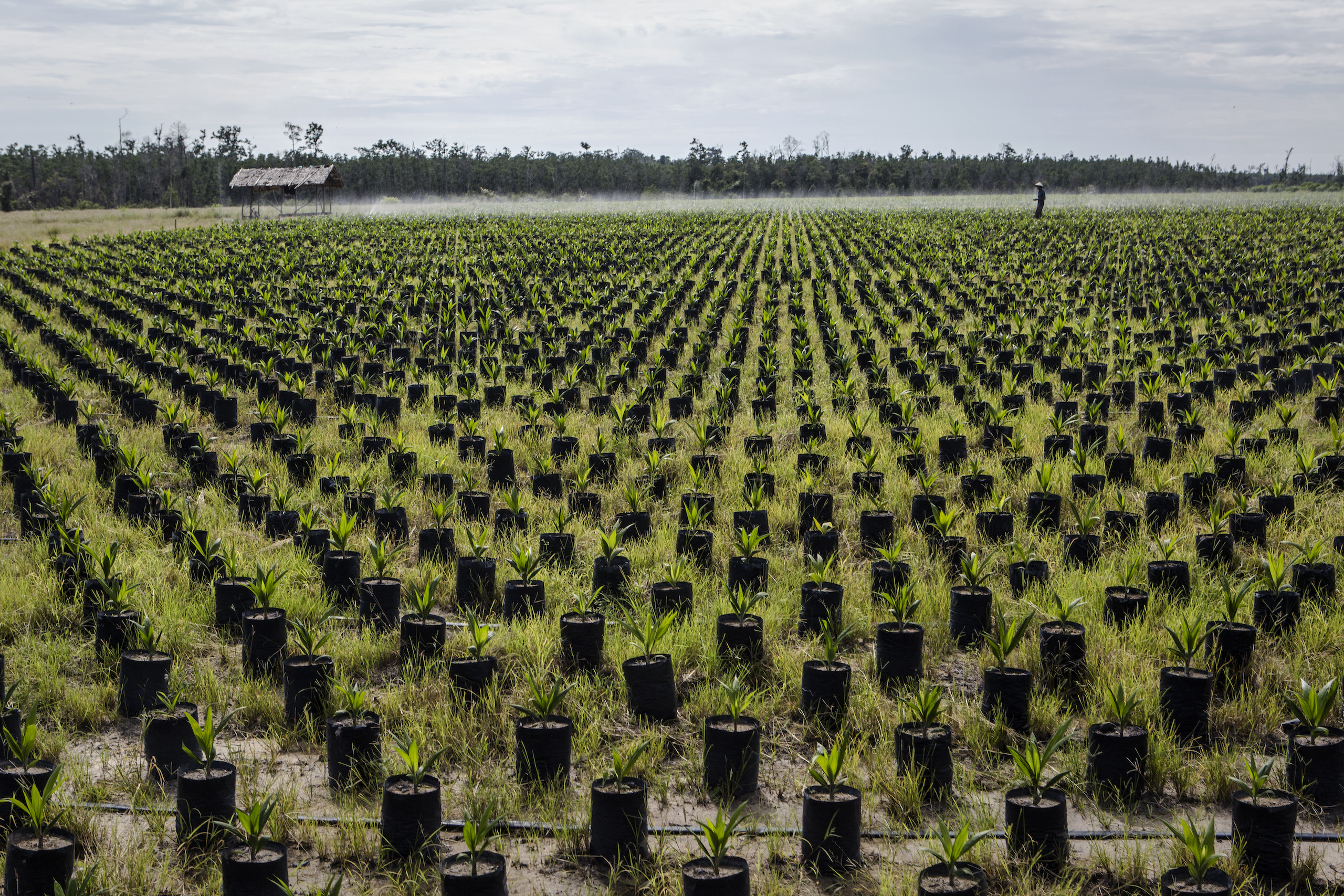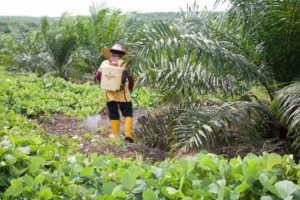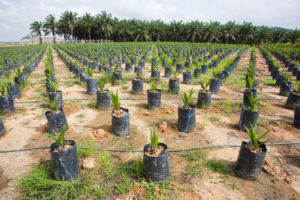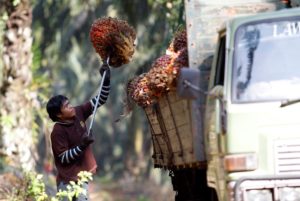When it comes to sustainability, “palm oil is simply the superior crop for its effective land utilization,” according to the Malaysian Palm Oil Council. It argues that oil palm produces far more oil on far less land than other major global oil seed crops such as sunflower, rapeseed and soybean. The Indonesian Palm Oil Association, a government-aligned group of major producers in the world’s top palm oil exporting country, says palm oil’s land efficiency makes it “the perfect balance between land for conservation and land for agricultural development”.
These arguments have been regularly cited in global media. Articles in outlets such as Smithsonian Magazine use the productivity argument to conclude that “giving up palm oil might be bad for the planet,” if it gave way to more land-demanding alternatives, and even quote similar statements from environmental non-profits such as WWF (World Wide Fund for Nature) and CDP (formerly Carbon Disclosure Project).
One of the most recent sources backing this argument is a 2018 study by the IUCN (International Union for Conservation of Nature), which states that oil palm produces up to nine times more oil per unit area than other major oil crops. Palm oil, the report says, produces 36% of food oil globally on just 8.6% of the land dedicated to food oil production. It’s a common refrain from not only the palm oil industry, but also governments in key producing countries and even the Roundtable on Sustainable Palm Oil. The RSPO argues that if we shift to other food oils, we would need far more land, resulting in potentially more deforestation and biodiversity loss.
“There is a growing demand for vegetable oil,” said Juan Pablo Monzon, a researcher at the University of Nebraska–Lincoln. “If it is not covered by oil palm, it will be covered by another crop.” Monzon, much like the RSPO, points to the potential environmental impacts this could have for countries producing alternative oil crops.
Productivity isn’t the same as sustainability
Many experts, however, have concerns with using productivity as a proxy for sustainability or climate impact.
“The tacit assumption is that all land has equal ecological potential. Clearly, that is wrong,” said Chris Malins, an expert in biofuels policy who runs the consultancy Cerulogy. “The idea that just because you get a better yield with palm oil in Indonesia than with sunflowers in Belarus or Ukraine, that palm oil is somehow automatically sustainable is trivial nonsense.”
Southeast Asia, which is responsible for more than 80% of global palm oil production, is a biodiversity hotspot, and both Indonesia and Malaysia host carbon-rich peatlands. Palm oil has been connected to deforestation and peatland loss, which destroys the habitat of endangered species like the Sumatran rhino and orangutan. Malins believes the productivity argument not only ignores the type of landscapes in which different oil crops are grown, but also the life-cycle greenhouse gas emissions from oil palm.
“The problem for palm oil is that its [carbon] footprint for every hectare of land that is converted is really, really bad compared to the expansion footprint of other oils,” said Stephanie Searle, the Fuels Program Director at the non-profit International Council on Clean Transportation (ICCT). “Palm oil, much more than other oil crops, tends to expand in tropical forests with high carbon stocks.”
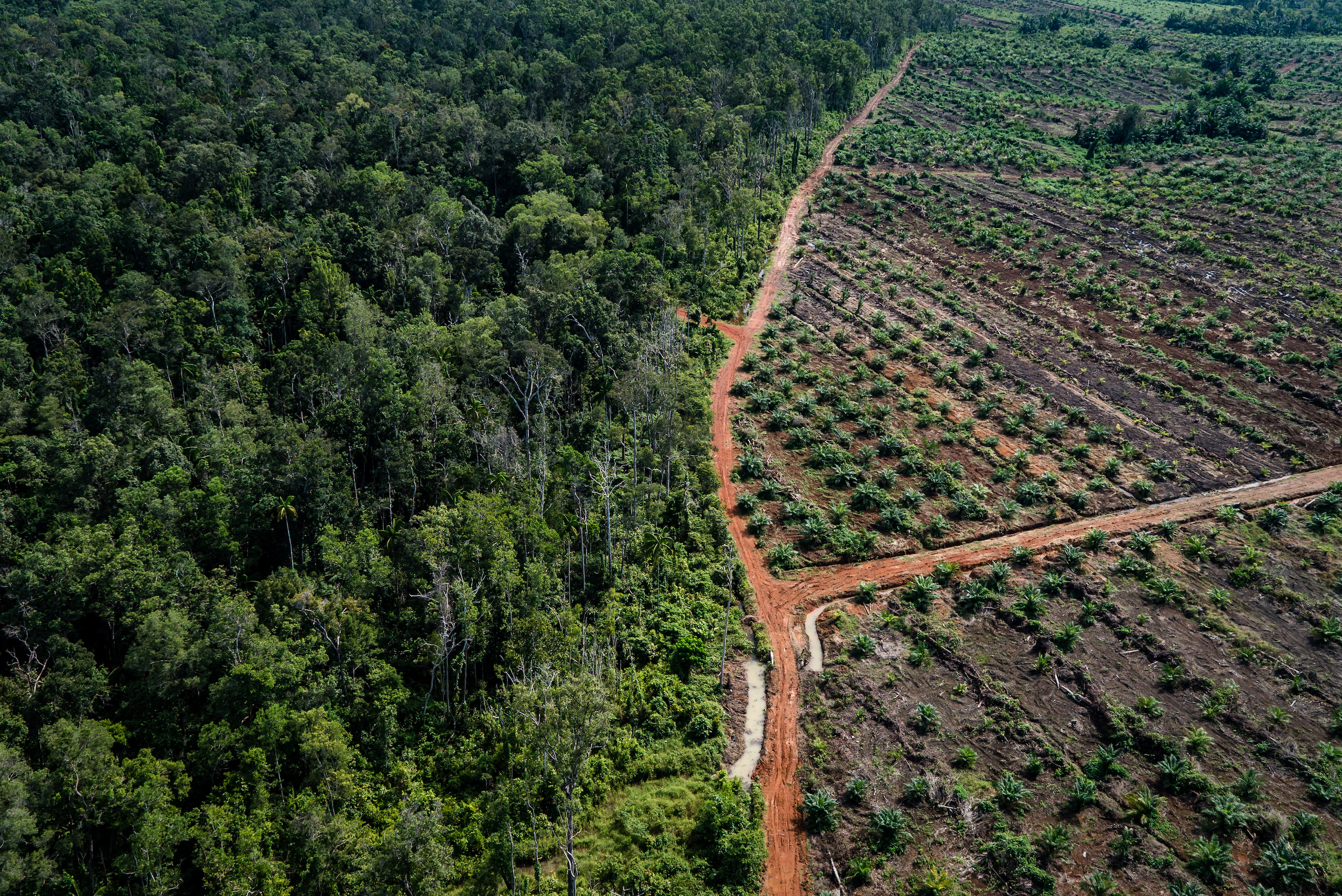
Studies from the European Union and the US Environmental Protection Agency, as well as non-profits and the ICCT (International Council on Clean Transportation) have all found that palm oil’s use in biofuels, which accounts for the majority of consumption in Europe, has higher emissions than not only most other oils, but fossil fuels as well.
“The greenhouse gas implications of palm oil use, in all the modelling, are shown to be much higher than rapeseed, soy or sunflower,” said Malins.
Yield and sustainability
Much as using productivity as a proxy for sustainability is problematic, assuming that all oil palm is grown on peatland or deforested land with high-climate and biodiversity impacts is also inaccurate. Many advocates believe that, if grown in the right landscapes and with proper management techniques, palm oil can be produced sustainably. For example, growing oil palm on former cattle pasture land in Colombia has been found to reduce its carbon footprint.
One way to prevent increased deforestation is to increase yields on existing plantations. Malaysia averages 3.21 tonnes of oil per hectare, compared to Indonesia, where it is 3 tonnes per hectare. Within that, however, there are higher-producing industrial plantations and lower-yielding smallholder plantations.
The idea that just because you get a better yield with palm oil in Indonesia than with sunflowers in Belarus or Ukraine, that palm oil is somehow automatically sustainable is trivial nonsenseChris Malins, biofuels expert and consultant, Cerulogy
“There has to be ways to improve the yields on areas that have already been converted to oil palm, because then you can produce more with existing land – that hypothetically is going to reduce the expansion of plantations,” said Pablo Pacheco, the Global Forests Lead Scientist at WWF.
In fact, increasing yields, particularly on smallholder plantations, is seen as key to meeting the growing demand for palm oil, including for its use in biofuels in Southeast Asia, and exports to countries such as India and China. Eliminating the conversion of tropical landscapes, and particularly peatlands, could significantly reduce palm oil’s impact on greenhouse gas emissions and ecosystems.
Since 2019, Monzon and a team of researchers from Indonesia, Europe and the US have been working with smallholder oil palm plantations, who have the lowest yields, to see how they can increase production to meet Indonesia’s palm oil goals without requiring land conversion, and provide greater economic benefits.
“Oil palm is really important for Indonesia as it is one of their main exports, and more than 40% of the area planted is planted via smallholders,” Monzon told China Dialogue. “It’s very important as an income source. Millions of farmers and families depend on this crop.”
Monzon and his team found, as part of the first phase of their research, that it is possible to meet future demand by increasing yield, but it would have to increase at a particularly high rate. They are currently piloting test projects with smallholders in six provinces to determine what management techniques can best aid farmers – and have strong results so far.
“The first year, yields increased by 10%, and are now up 30%,” said Monzon. “We hope to increase the yield even more.”
There are concerns, however, that intensification of smallholder plantations could result in the shifting of multi-crop plots to monoculture farms, bringing both social and environmental impacts.
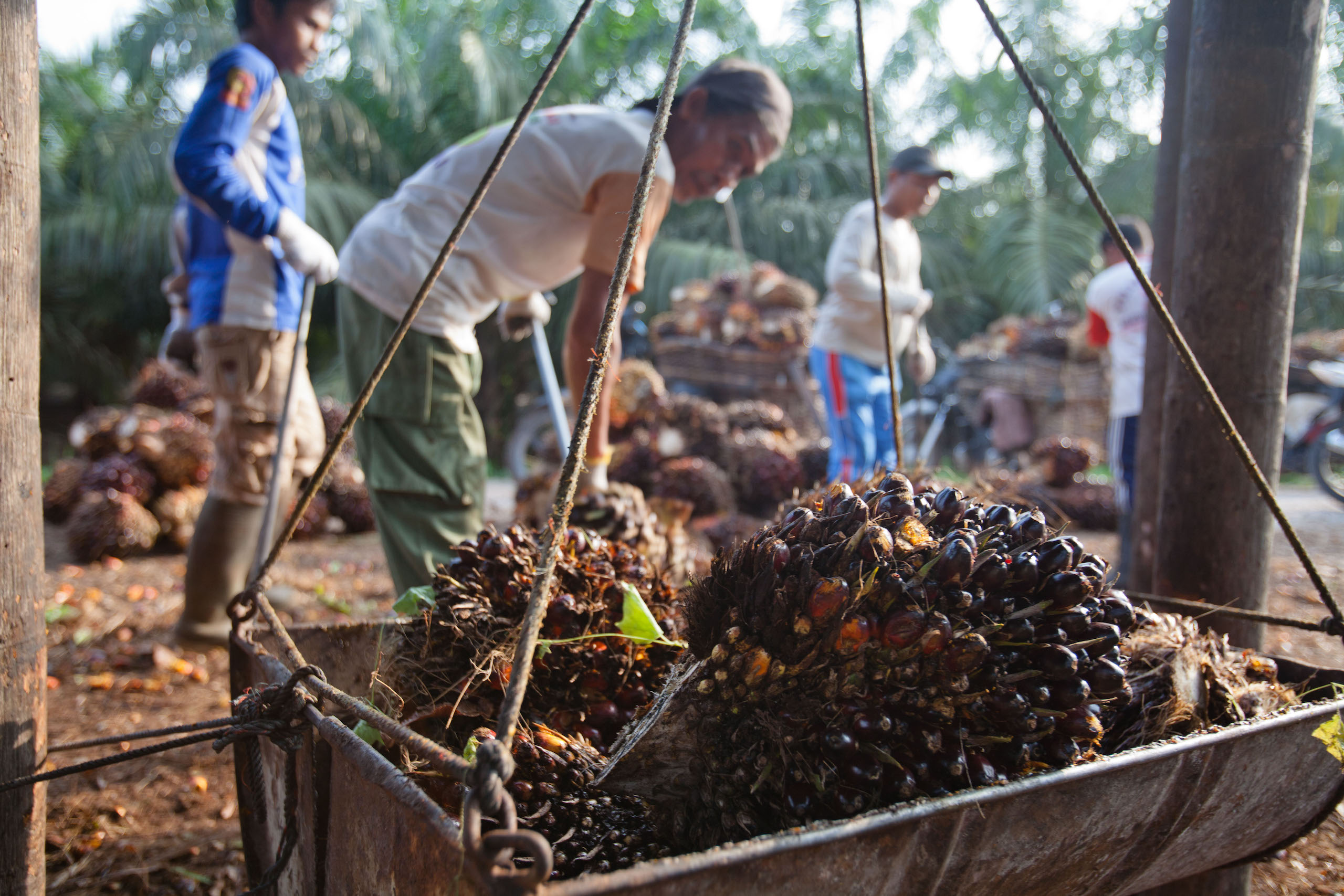
“If farmers become too dependent on one crop, they become a bit more vulnerable to economic shocks,” said Pacheco. There are also potential spill-over effects too. “If there is going to be an increase in yields, that is going to increase the profitability of plantations, that could attract more palm oil. You can hypothetically save forests, but you can also produce new incentives to keep expanding plantations.”
Strong policies that prevent expansion are, Pacheco believes, key – and perhaps urgent. The recent expiration of a ban on issuing new licences for oil palm plantations in Indonesia could, some environmentalists say, increase the clearing of forests for oil palm expansion.
Palm oil in diverse landscapes
There is also a need to think beyond yields, especially when it comes to smallholders, who operate in diverse landscapes.
“There is now a discussion emerging on whether it would be possible to promote oil palm as part of more diversified systems,” said Pacheco. This may lead to lower yields of palm oil, but growing it in agroforestry systems that support local biodiversity, or with native crops like rattan or cassava.
“The productivity of each oil palm tree is not going to be affected if it is grown with other perennials, but the number of trees is going to decrease,” said Pacheco. Yet, it could provide diversified income, and could be more sustainable from an environmental perspective, despite its lower per hectare productivity.
For Malins and Pacheco, a more science-driven, holistic view of sustainability – beyond productivity talking points – will be necessary for the palm oil industry, if its commodity is to become a truly responsible choice globally.
